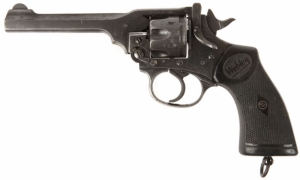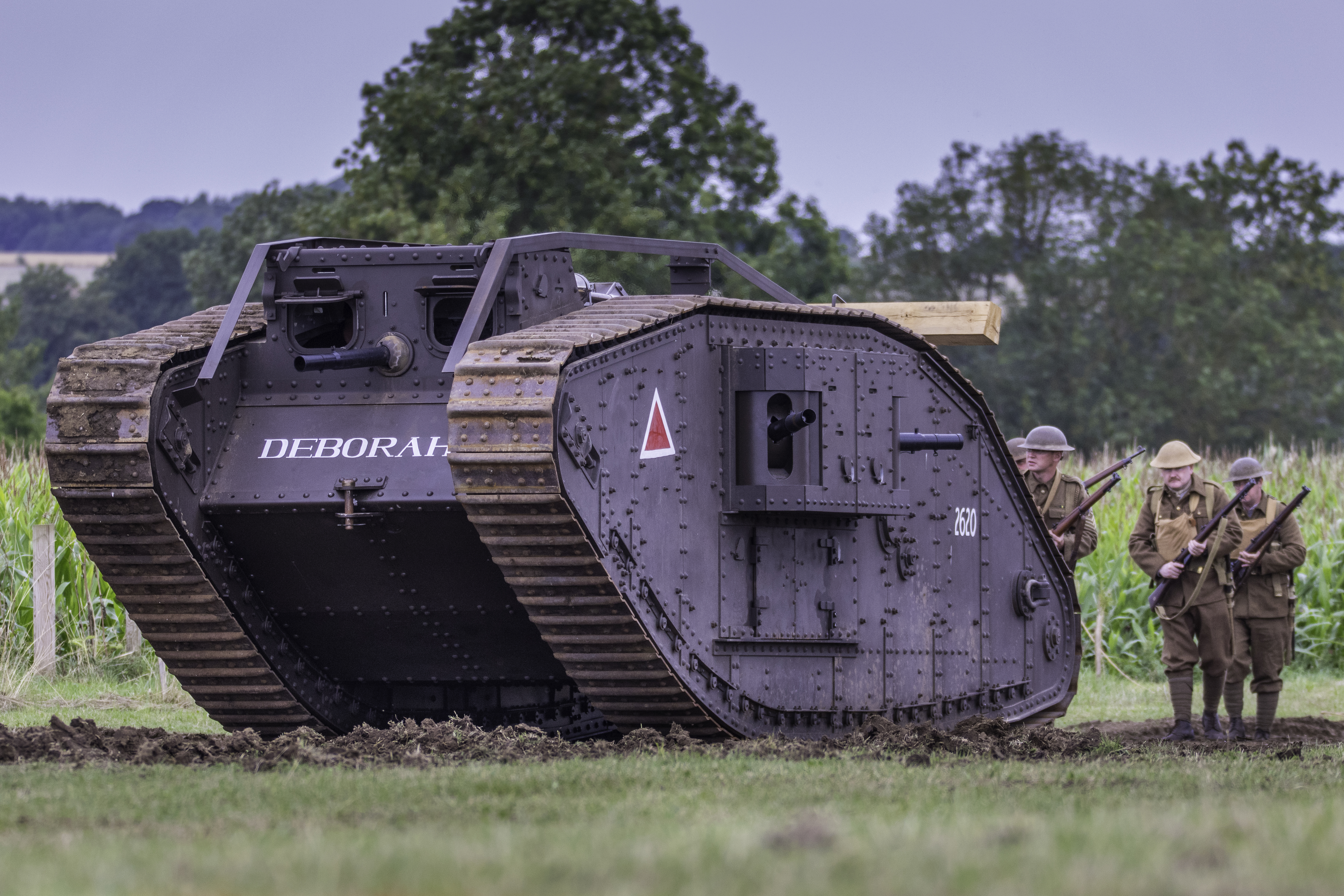Webley Revolver

Webley Revolver
The Great War saw Britain and her allies armed with revolvers rather than the self loading pistol such as the Luger. In the dreadful conditions of trench warfare, the revolver was more reliable in almost every respect than the SLP.
The rugged Webley in .455” was a hinged frame, self-extracting revolver that fired a man stopping .455” round that did everything that it was required to do. However, the tremendous losses, especially of officers who went over the top in front of their men, generally carrying a revolver, meant that orders had to be placed with Smith and Western and Colt to keep up with demand. However, the .455” was a big round and slightly built men found it a bit of a handful to become proficient in its use. For that reason when trials were conducted between the wars for a replacement revolver, a new calibre of .38/200 was decided upon. The 200 grain bullet was a compromise between stopping power and reducing weight of the new revolver plus its reduced recoil made training and proficiency far easier. Hence, the hinged frame Enfield revolver No 2 Mark 1 became our official revolver from around 1936 onwards.
The Royal Small Arms factory at Enfield “slightly modified” the Webley design and were given the contract for the new revolver. Webley complained but were told to ‘sue if you dare’. They backed down. However, when war came in 1939, Enfield could not produce the revolver so Webley were given the task of manufacturing the .38” revolver instead! The Mark 4 Webley along with the Enfield proved to be rugged and generally, very well made, being manufactured by Webley until the late 1960’s for commercial sales.
It proved almost impossible to find ammunition manufacturers who could make the .38/200 round for these revolvers in this country. We went to America for supplies of .38” ammunition. They could not make the 200 grain bullet but agreed to make their 145 grain bulleted round known as the .38” Smith and Wesson. So our revolvers throughout the war used a very under powered round that resulted in loss of faith in their stopping ability.
As you might know, a revolvers ammunition is loaded into a revolving cylinder, hence its name, for the cylinder to turn, there needs to be a gap between the front face of the cylinder and the rear face of the barrel. When it is fired, the gas produced escapes out of this gap resulting in less power to drive the bullet up the barrel. With an underpowered round to start with, any loss of velocity reduces the ability to disable an enemy. Coupled with the almost standardization of the 9mm round used in the Sten, Lanchester, Patchett and the Browning pistol, the supply of another calibre proved to be difficult at best, and sometimes impossible. There is no doubt that the revolver generally is far more reliable in adverse conditions than the self loading pistol.











